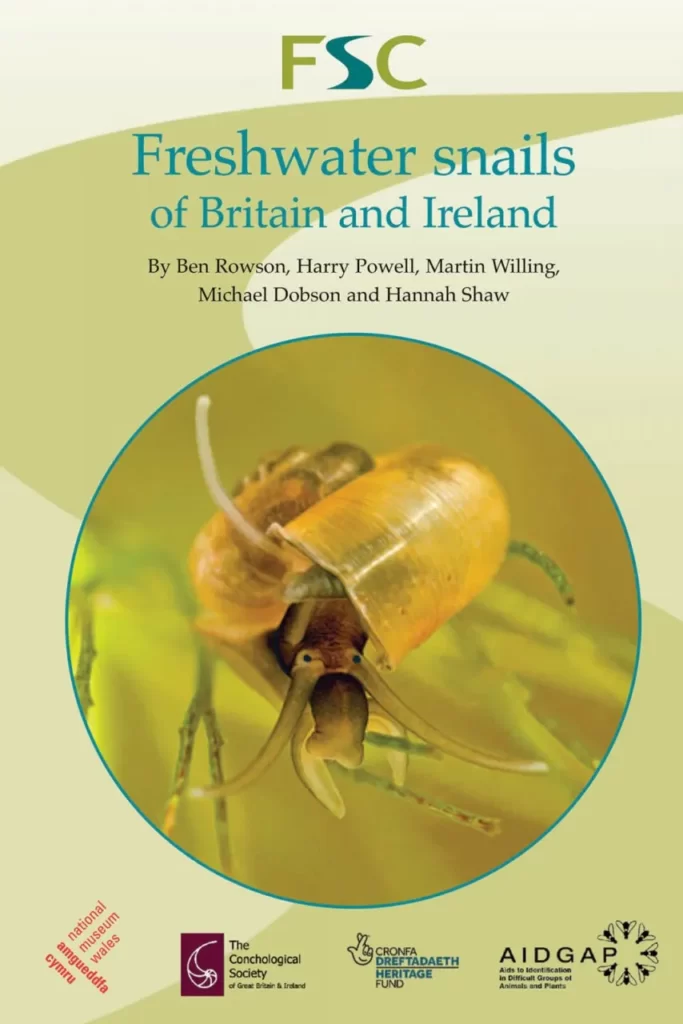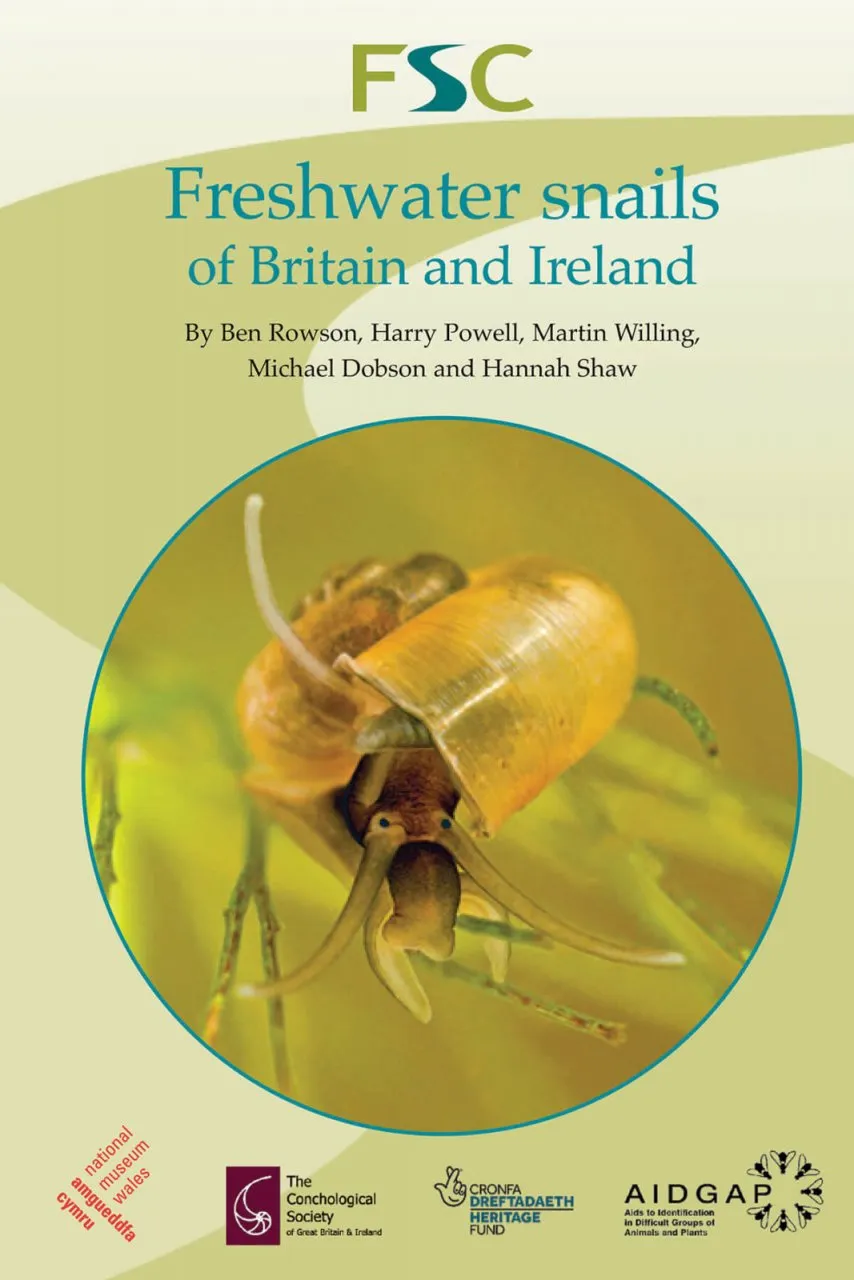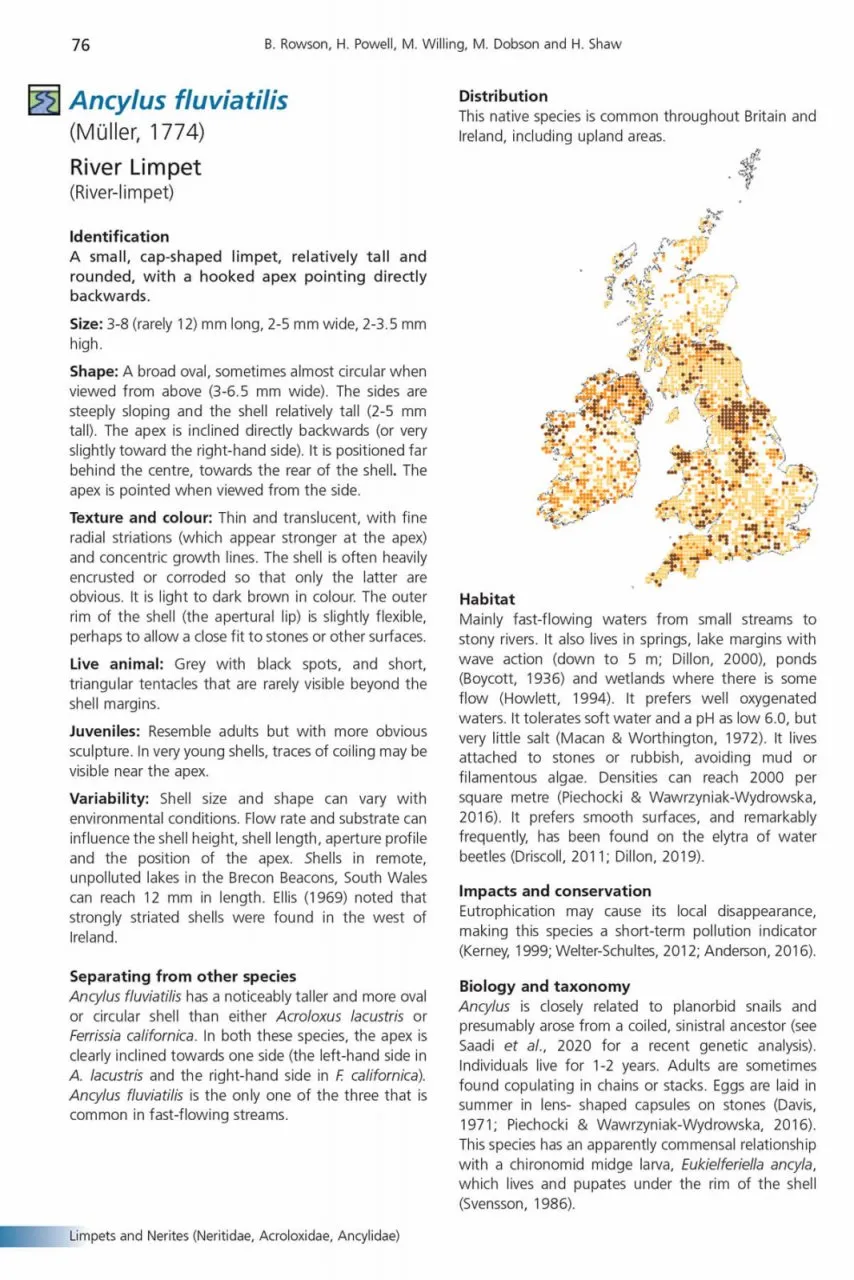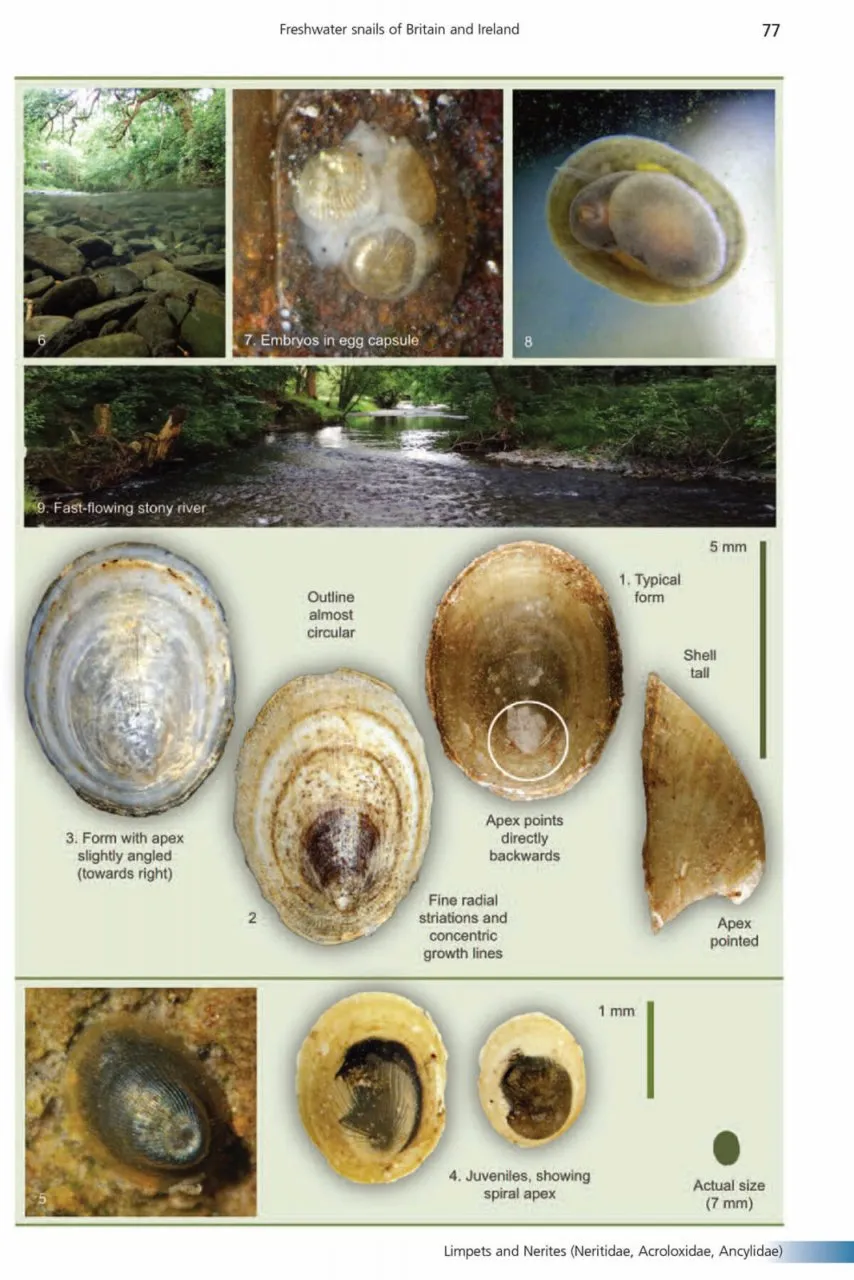This is a terrific book: a ‘must have’ for anyone who wants to learn how to identify, accurately, freshwater snails in Britain and Ireland. The authors have produced a guide which will be the standard for the next 20 years, and perhaps longer if the durability of its illustrious predecessor by T. T. Macan (1977) is anything to go by.
The book begins with a pen-portrait of the biology of our freshwater snails, with an engaging tone (‘No one… is ever far from a freshwater snail’, ‘Food is either found by the tentacles… or simply blundered into’). The text continues with a useful diagrammatic summary of the habitats of the species, encapsulating modern thinking around the importance of a wide range of freshwater habitats for snails, including waterbodies both small and large, standing and flowing, fresh and brackish. It also encourages people to check unusual habitats such as hothouses, which might be a source of new unwanted invaders. There is a short section on the conservation of freshwater snails, written authoritatively by authors with close involvement in many of Britain’s most significant mollusc-conservation projects. The introduction concludes with a comprehensive description of when, where and how to look for snails and the type of equipment needed to identify them. Even if you skip to the key and pictures first, it is well worth spending time in reading these introductory pages as you will come away much better informed about the group.
View this book on the NHBS website
The meat of the book is in the identification keys and species descriptions. The standard species list near the front of the book helpfully separates the native and non-native species and presents an up-to-date list of scientific names, one or two of which may be unfamiliar if you have been looking at British freshwater species for some time. For example, our commonest species, the Wandering Snail Ampullaceana balthica, is now on its third name since Macan’s time, reflecting our growing knowledge of taxonomy. I loved the coining of a new English name for Omphiscola glabra, currently known as the Mud Pond Snail. The suggestion by the authors that we rename it the Slender Pond Snail does this lovely animal much more justice.
The identification key is attractive and straightforward. I worked a few specimens through and was impressed by the simplicity and clarity. A real plus point is the accompanying line drawings that show the key features used in identification. Although these may look a little sketchy at first glance, they are remarkably good pen portraits, useful for beginners and experienced ecologists alike. As I can never find graph paper when I want to check the size of snails, the rule printed on the inside back cover is much appreciated.
Each species description provides a comprehensive, succinct and accurate summary of the key identification features, with short information-packed summaries of the animal’s distribution, habitats, biology and conservation. Importantly, it deals well with the problems of immature specimens, which are often the hardest part of freshwater-snail identification. The species accounts also incorporate key observations from mainland Europe, and here there will be few readers who do not learn something new. The biggest surprise for this reviewer is quite how many brackish-water species there are to consider, including a number which are at risk of being lost from Britain.
If there are faults in the book, they are few. The format perhaps makes some habitat photos a little small, but the range of pictures is good and will help to provide a better understanding of the full diversity of important freshwater habitats, beyond the typical bias towards big lakes and rivers in standard freshwater textbooks.
Species identification is fundamental to enjoying and ultimately protecting our freshwater wildlife. This book is a real step forward, and I hope that it will not only enable a new generation of enthusiasts to engage with freshwater snails but also stimulate the interest of more experienced naturalists.
Reference
Macan, T. T. 1977. A key to the British fresh- and brackish-water gastropods with notes on their ecology. Scientific Publications of the Freshwater Biological Association No. 13. Freshwater Biological Association, Ambleside.




